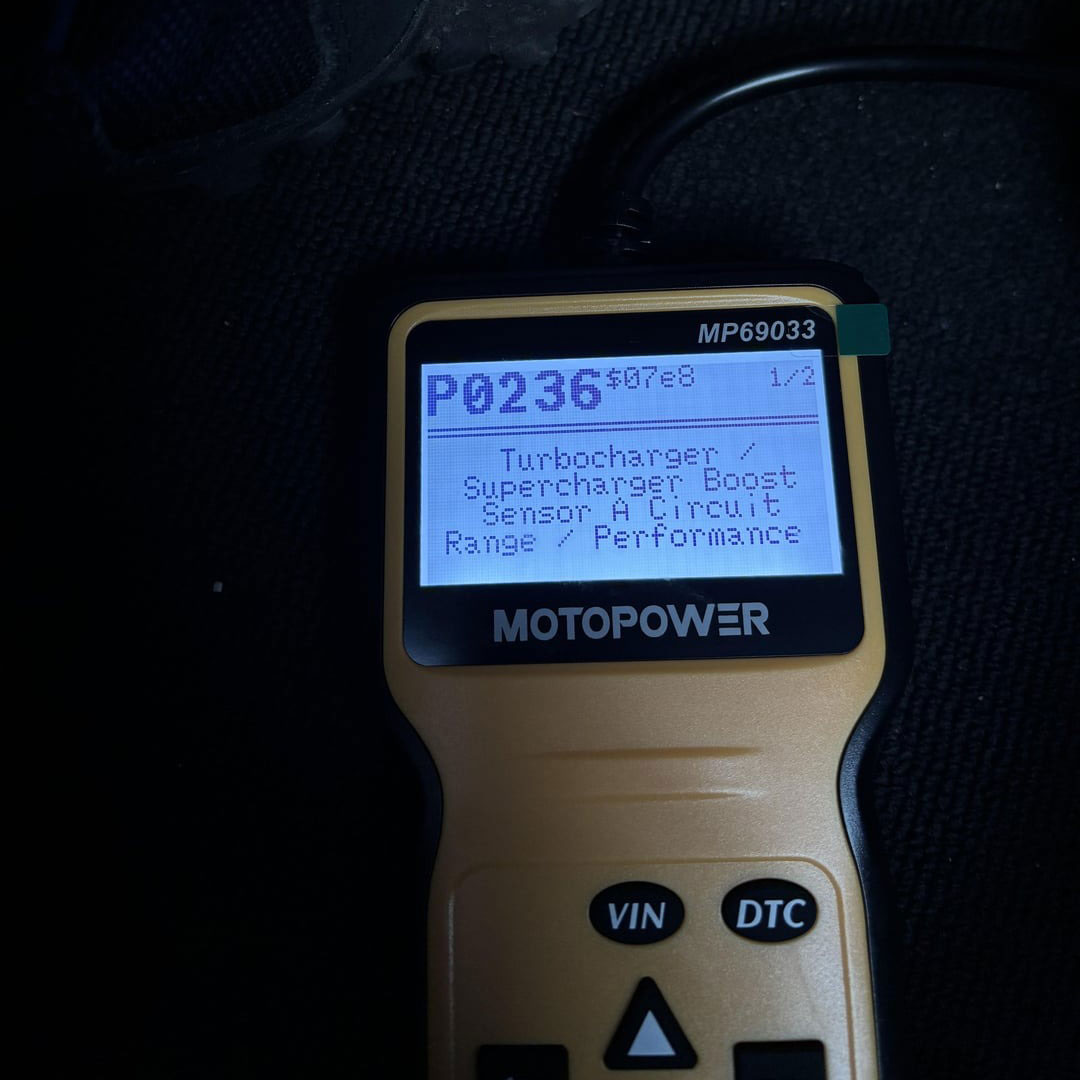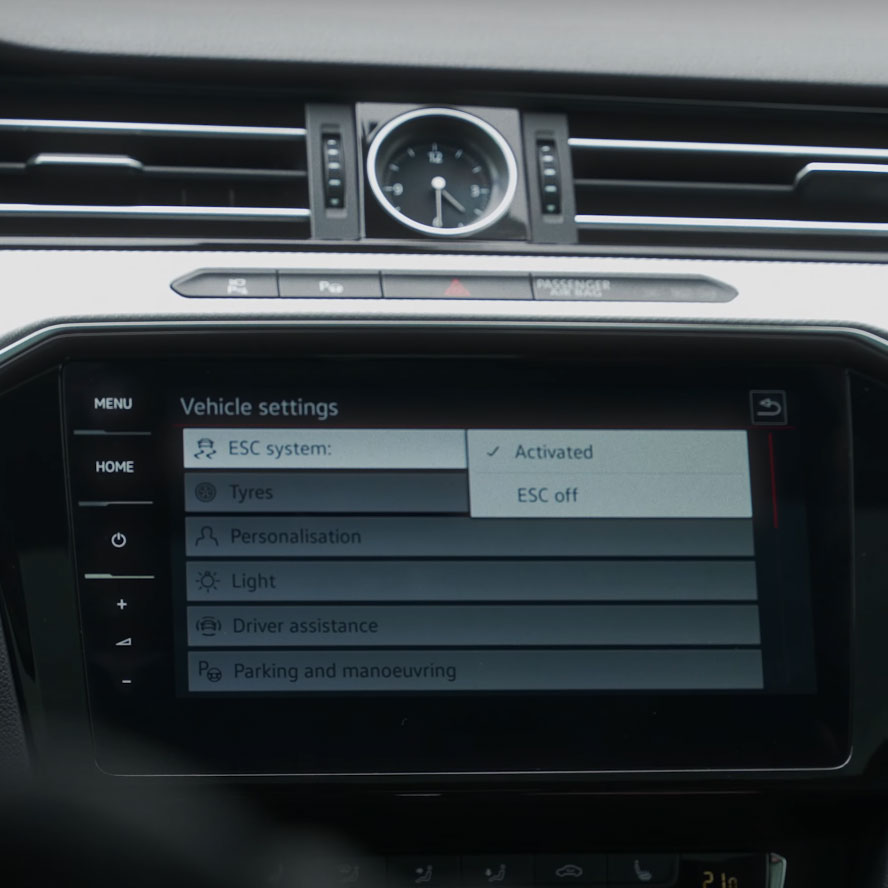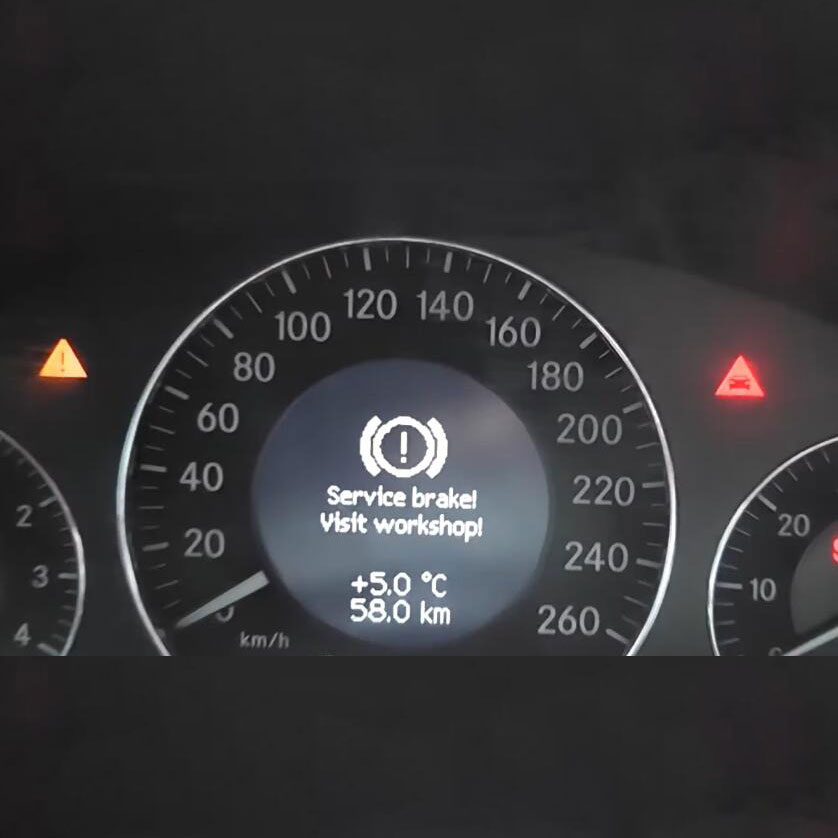
Audi A3 Trouble Code P0300: Causes, Diagnosis, and Solutions
Contents
- 1. Understanding the Audi A3 P0300 Trouble Code
- 1.1. What Triggers the P0300 Code?
- 1.2. Common Symptoms Associated with P0300
- 2. Diagnosing the P0300 Code: A Step-by-Step Guide
- 2.1. Preliminary Inspection
- 2.2. Using an OBD-II Scanner
- 2.3. Identifying the Affected Cylinder(s)
- 2.4. Testing Ignition System Components
- 2.5. Evaluating the Fuel System
- 2.6. Checking for Vacuum Leaks
- 2.7. Compression Testing
- 3. Common Causes of P0300 in Audi A3
- 3.1. Faulty Spark Plugs
- 3.2. Defective Ignition Coils
- 3.3. Vacuum Leaks
- 3.4. Clogged Fuel Injectors
- 3.5. Carbon Buildup in the Intake Manifold
- 3.6. Low Compression
- 4. Advanced Diagnostic Techniques for P0300
- 4.1. Scan Tool Data Analysis
- 4.2. Oscilloscope Testing
- 4.3. Smoke Testing for Vacuum Leaks
- 4.4. Compression and Leak-Down Testing
- 5. Repairing the P0300 Code: Solutions and Procedures
- 5.1. Replacing Faulty Components
- 5.2. Cleaning the Intake Manifold
- 5.3. Addressing Vacuum Leaks
- 5.4. Repairing Engine Mechanical Issues
- 6. Preventing Future Misfires
- 6.1. Regular Maintenance
- 6.2. Using Quality Fuel
- 6.3. Addressing Issues Promptly
- 7. The Role of AutoExplain in Resolving P0300
- 7.1. Remote Diagnostic Services
- 7.2. Coding and Programming Solutions
- 7.3. Expert Support and Guidance
- 8. Real-World Case Studies: P0300 in Audi A3
- 8.1. Case Study 1: Faulty Ignition Coils
- 8.2. Case Study 2: Vacuum Leak
- 8.3. Case Study 3: Carbon Buildup
- 9. Cost Considerations for P0300 Repairs
- 9.1. Factors Affecting Cost
- 9.2. Estimated Repair Costs
- 10. Frequently Asked Questions (FAQs) About P0300
- 10.1. Can I Drive My Audi A3 with a P0300 Code?
- 10.2. Will the P0300 Code Clear Itself?
- 10.3. Can a Bad O2 Sensor Cause a P0300 Code?
- 10.4. How Often Should I Replace My Spark Plugs?
- 10.5. Can Low Fuel Pressure Cause a P0300 Code?
- 10.6. Is Carbon Buildup a Common Problem in Audi A3 Engines?
- 10.7. What is Walnut Blasting?
- 10.8. How Can AutoExplain Help Me with a P0300 Code?
- 10.9. What are the Symptoms of a Misfiring Engine?
- 10.10. Can a Bad MAF Sensor Cause a P0300 Code?
- Conclusion: Resolving Your Audi A3 P0300 Code with AutoExplain
1. Understanding the Audi A3 P0300 Trouble Code
What does the P0300 code mean for your Audi A3? A P0300 code signifies that the engine control unit (ECU) has detected random or multiple misfires occurring within the engine. These misfires indicate that one or more cylinders are not firing correctly, leading to reduced engine performance, rough idling, and potentially increased emissions. To further illustrate, according to a study by the ASE, misfires can decrease fuel efficiency by as much as 30% and can damage catalytic converters if left unaddressed.
1.1. What Triggers the P0300 Code?
Several factors can trigger the P0300 code in your Audi A3. The ECU monitors the crankshaft’s rotational speed. When a misfire occurs, the crankshaft momentarily slows down. If the ECU detects this slowdown within a specific cylinder or across multiple cylinders, it logs the P0300 code. Here’s a breakdown of potential causes:
- Ignition System Issues: Faulty spark plugs, ignition coils, or wiring problems can disrupt the spark needed for combustion.
- Fuel System Problems: Insufficient fuel pressure, clogged fuel injectors, or a malfunctioning fuel pump can lead to a lean fuel mixture and misfires.
- Vacuum Leaks: Leaks in the intake manifold, vacuum hoses, or gaskets can disrupt the air-fuel mixture, causing misfires.
- Engine Mechanical Problems: Low compression, worn piston rings, or damaged valves can prevent proper combustion.
- Sensor Malfunctions: A faulty mass airflow (MAF) sensor or oxygen (O2) sensor can provide incorrect data to the ECU, leading to misfires.
1.2. Common Symptoms Associated with P0300
Recognizing the symptoms associated with the P0300 code is crucial for early diagnosis and repair. Here are some common signs that your Audi A3 may be experiencing misfires:
- Rough Idling: The engine may vibrate or shake noticeably when idling.
- Reduced Engine Power: The car may feel sluggish or lack its usual acceleration.
- Poor Fuel Economy: You may notice a decrease in your car’s miles per gallon (MPG).
- Hesitation During Acceleration: The engine may hesitate or stumble when you press the accelerator.
- Check Engine Light: The check engine light will illuminate on the dashboard.
- Unusual Noises: You may hear popping or sputtering sounds from the exhaust.
2. Diagnosing the P0300 Code: A Step-by-Step Guide
Diagnosing the P0300 code requires a systematic approach to identify the underlying cause of the misfires. AutoExplain recommends following these steps:
2.1. Preliminary Inspection
Before diving into complex diagnostics, start with a thorough visual inspection:
- Check for Obvious Issues: Look for loose wires, damaged vacuum hoses, and any other visible signs of damage in the engine bay.
- Inspect Spark Plugs: Remove the spark plugs and examine their condition. Look for signs of wear, fouling, or damage.
- Check Ignition Coils: Inspect the ignition coils for cracks, corrosion, or other signs of damage.
2.2. Using an OBD-II Scanner
An OBD-II scanner is an essential tool for diagnosing the P0300 code. It allows you to retrieve stored trouble codes and monitor engine parameters:
- Retrieve Trouble Codes: Connect the scanner to the OBD-II port and retrieve all stored trouble codes. Note any other codes that may be present, as they can provide valuable clues.
- Monitor Engine Parameters: Use the scanner to monitor engine parameters such as engine speed (RPM), manifold absolute pressure (MAP), MAF sensor readings, and oxygen sensor readings. Look for any abnormal values that may indicate a problem.
2.3. Identifying the Affected Cylinder(s)
While the P0300 code indicates random or multiple misfires, determining which cylinder(s) are affected can narrow down the possible causes.
- Check for Specific Misfire Codes: After the P0300 code appears, specific misfire codes for individual cylinders may appear, such as P0301 (cylinder 1 misfire), P0302 (cylinder 2 misfire), etc.
- Perform a Cylinder Balance Test: A cylinder balance test involves disabling one fuel injector at a time and monitoring the engine’s RPM drop. If disabling a particular cylinder does not cause an RPM drop, it indicates that the cylinder is not contributing to the engine’s power output and is likely misfiring.
2.4. Testing Ignition System Components
The ignition system is a common culprit for misfires. Here’s how to test its components:
- Spark Plug Test: Use a spark plug tester to check if each spark plug is producing a strong, consistent spark.
- Ignition Coil Test: Use a multimeter to measure the resistance of each ignition coil. Compare the readings to the manufacturer’s specifications. You can also swap ignition coils between cylinders to see if the misfire follows the coil.
2.5. Evaluating the Fuel System
Fuel delivery issues can also cause misfires. Here’s how to evaluate the fuel system:
- Fuel Pressure Test: Use a fuel pressure gauge to measure the fuel pressure at the fuel rail. Ensure that the pressure is within the manufacturer’s specifications.
- Fuel Injector Test: Use a multimeter to measure the resistance of each fuel injector. Compare the readings to the manufacturer’s specifications. You can also use a stethoscope to listen for the injectors clicking as they open and close.
2.6. Checking for Vacuum Leaks
Vacuum leaks can disrupt the air-fuel mixture and cause misfires. Here’s how to check for them:
- Visual Inspection: Inspect all vacuum hoses and connections for cracks, leaks, or damage.
- Smoke Test: Use a smoke machine to introduce smoke into the intake manifold. Observe where the smoke escapes to identify any leaks.
- Carburetor Cleaner Test: Spray carburetor cleaner around vacuum hoses and intake manifold gaskets. If the engine RPM changes, it indicates a vacuum leak in that area.
2.7. Compression Testing
Low compression can indicate engine mechanical problems that can cause misfires.
- Perform a Compression Test: Use a compression tester to measure the compression in each cylinder. Compare the readings to the manufacturer’s specifications. A cylinder with significantly lower compression than the others may have a problem.
- Leak-Down Test: If a compression test reveals low compression in one or more cylinders, perform a leak-down test to pinpoint the source of the leak. This test involves pressurizing the cylinder with compressed air and listening for leaks from the exhaust, intake, or crankcase.
3. Common Causes of P0300 in Audi A3
Let’s delve deeper into the common causes of the P0300 code in Audi A3 vehicles:
3.1. Faulty Spark Plugs
Worn or damaged spark plugs are a frequent cause of misfires. Spark plugs degrade over time, leading to a weaker spark and incomplete combustion.
- Inspection: Examine the spark plugs for wear, carbon buildup, or damage.
- Solution: Replace the spark plugs with new ones that meet the manufacturer’s specifications. Consider using high-quality spark plugs for improved performance and longevity.
3.2. Defective Ignition Coils
Ignition coils provide the high voltage needed to create a spark at the spark plugs. If an ignition coil fails, it can cause a misfire in the affected cylinder.
- Testing: Use a multimeter to measure the resistance of each ignition coil. Compare the readings to the manufacturer’s specifications. You can also swap ignition coils between cylinders to see if the misfire follows the coil.
- Solution: Replace any defective ignition coils with new ones. Consider replacing all ignition coils at the same time to ensure consistent performance.
3.3. Vacuum Leaks
Vacuum leaks can disrupt the air-fuel mixture and cause misfires, rough idling, and poor engine performance.
- Common Leak Locations: Check the intake manifold gaskets, vacuum hoses, and throttle body for leaks.
- Solution: Repair or replace any leaking vacuum hoses or gaskets. Ensure that all connections are tight and secure.
3.4. Clogged Fuel Injectors
Clogged fuel injectors can restrict fuel flow to the cylinders, leading to a lean fuel mixture and misfires.
- Symptoms: Rough idling, poor acceleration, and reduced fuel economy.
- Solution: Clean the fuel injectors using a fuel injector cleaner or have them professionally cleaned. In severe cases, you may need to replace the fuel injectors.
3.5. Carbon Buildup in the Intake Manifold
Direct injection engines, like those found in many Audi A3 models, are prone to carbon buildup in the intake manifold. This buildup can restrict airflow and cause misfires, especially during cold starts. According to research from the University of Michigan, carbon buildup can reduce engine performance by as much as 15%.
- Symptoms: Cold start misfires, rough idling, and reduced engine power.
- Solution: Perform a carbon cleaning service, such as walnut blasting, to remove the carbon buildup from the intake manifold.
3.6. Low Compression
Low compression in one or more cylinders can indicate engine mechanical problems, such as worn piston rings or damaged valves, that can cause misfires.
- Causes: Worn piston rings, damaged valves, or a blown head gasket.
- Solution: Perform a compression test to measure the compression in each cylinder. If low compression is detected, further diagnose the cause and repair or replace the affected components.
4. Advanced Diagnostic Techniques for P0300
In some cases, diagnosing the P0300 code may require advanced diagnostic techniques and specialized tools. AutoExplain offers a range of remote diagnostic and programming services to help you tackle even the most challenging issues.
4.1. Scan Tool Data Analysis
Analyzing the data stream from the ECU using a scan tool can provide valuable insights into the cause of the misfires.
- MAF Sensor Readings: Monitor the MAF sensor readings to ensure that the sensor is accurately measuring the amount of air entering the engine.
- Oxygen Sensor Readings: Monitor the oxygen sensor readings to check the air-fuel mixture.
- Fuel Trim Values: Analyze the short-term and long-term fuel trim values to identify any fuel delivery issues or vacuum leaks.
4.2. Oscilloscope Testing
An oscilloscope can be used to analyze the waveforms of various engine sensors and components, providing a more detailed view of their performance.
- Ignition Coil Waveforms: Use an oscilloscope to analyze the waveforms of the ignition coils to identify any problems with their performance.
- Fuel Injector Waveforms: Use an oscilloscope to analyze the waveforms of the fuel injectors to check their operation and identify any issues with their spray pattern.
4.3. Smoke Testing for Vacuum Leaks
A smoke test is a highly effective way to locate vacuum leaks in the engine.
- Procedure: Introduce smoke into the intake manifold and observe where the smoke escapes.
- Benefits: This test can help you identify even the smallest vacuum leaks that may be difficult to find with a visual inspection.
4.4. Compression and Leak-Down Testing
These tests can help you determine the mechanical condition of the engine and identify any problems with the cylinders, pistons, or valves.
- Compression Test: Measures the compression pressure in each cylinder.
- Leak-Down Test: Pressurizes each cylinder and measures the rate of pressure loss to identify the source of any leaks.
5. Repairing the P0300 Code: Solutions and Procedures
Once you’ve diagnosed the cause of the P0300 code, it’s time to implement the necessary repairs.
5.1. Replacing Faulty Components
Replacing faulty components is often necessary to resolve the P0300 code.
- Spark Plugs: Replace worn or damaged spark plugs with new ones that meet the manufacturer’s specifications.
- Ignition Coils: Replace any defective ignition coils with new ones.
- Fuel Injectors: Replace clogged or malfunctioning fuel injectors.
- Vacuum Hoses: Replace any cracked or leaking vacuum hoses.
5.2. Cleaning the Intake Manifold
If carbon buildup in the intake manifold is causing the misfires, a carbon cleaning service is necessary.
- Walnut Blasting: This procedure involves using a specialized machine to blast walnut shells into the intake ports to remove carbon buildup.
- Chemical Cleaning: Chemical cleaning involves using a special solvent to dissolve the carbon buildup.
5.3. Addressing Vacuum Leaks
Repairing vacuum leaks is essential for restoring proper engine performance.
- Replacing Hoses: Replace any cracked or leaking vacuum hoses.
- Replacing Gaskets: Replace any damaged intake manifold gaskets.
- Sealing Leaks: Use a sealant to seal any small leaks in the intake manifold or vacuum system.
5.4. Repairing Engine Mechanical Issues
If low compression or other engine mechanical problems are causing the misfires, more extensive repairs may be necessary.
- Valve Repair or Replacement: Repair or replace any damaged valves.
- Piston Ring Replacement: Replace worn piston rings to restore proper compression.
- Head Gasket Replacement: Replace a blown head gasket to seal the cylinders and restore compression.
6. Preventing Future Misfires
Preventing future misfires is crucial for maintaining the performance and reliability of your Audi A3.
6.1. Regular Maintenance
Follow the manufacturer’s recommended maintenance schedule to ensure that your engine is properly maintained.
- Spark Plug Replacement: Replace the spark plugs at the recommended intervals.
- Fuel Filter Replacement: Replace the fuel filter at the recommended intervals to ensure a clean fuel supply.
- Air Filter Replacement: Replace the air filter at the recommended intervals to ensure proper airflow to the engine.
6.2. Using Quality Fuel
Using high-quality fuel can help prevent carbon buildup and other fuel-related problems.
- Top Tier Fuel: Use Top Tier fuel, which contains additives that help keep the fuel system clean. According to a AAA study, Top Tier fuel can reduce engine deposits by as much as 50%.
- Fuel Additives: Consider using fuel additives to help clean the fuel injectors and prevent carbon buildup.
6.3. Addressing Issues Promptly
Address any engine-related issues promptly to prevent them from escalating into more serious problems.
- Check Engine Light: Don’t ignore the check engine light. Have your car diagnosed as soon as possible to identify and address any potential problems.
- Unusual Symptoms: Pay attention to any unusual symptoms, such as rough idling, poor acceleration, or reduced fuel economy, and have them checked out by a qualified mechanic.
7. The Role of AutoExplain in Resolving P0300
AutoExplain is your trusted partner for diagnosing and resolving the P0300 code in your Audi A3. We offer a range of services and solutions to help you get your car running smoothly again.
7.1. Remote Diagnostic Services
Our remote diagnostic services allow you to connect with our expert technicians remotely and receive real-time assistance with diagnosing and troubleshooting the P0300 code.
- Benefits: Convenient, cost-effective, and access to expert knowledge.
7.2. Coding and Programming Solutions
AutoExplain offers coding and programming solutions to address a wide range of engine-related issues, including misfires.
- ECU Reprogramming: We can reprogram the ECU to optimize engine performance and address misfire-related issues.
- Module Calibration: We can calibrate various engine modules to ensure they are functioning correctly and communicating effectively.
7.3. Expert Support and Guidance
Our team of experienced technicians is available to provide expert support and guidance throughout the diagnostic and repair process.
- Troubleshooting Assistance: We can help you troubleshoot the P0300 code and identify the underlying cause.
- Repair Recommendations: We can provide you with detailed repair recommendations and guidance on how to properly repair your Audi A3.
8. Real-World Case Studies: P0300 in Audi A3
Let’s examine some real-world case studies to illustrate the diagnostic and repair process for the P0300 code in Audi A3 vehicles.
8.1. Case Study 1: Faulty Ignition Coils
- Symptoms: Rough idling, reduced engine power, and a P0300 code.
- Diagnosis: The mechanic used an OBD-II scanner to retrieve the P0300 code and perform a cylinder balance test. The test revealed that cylinder 2 was misfiring. The mechanic then tested the ignition coils and found that the ignition coil on cylinder 2 was defective.
- Solution: The mechanic replaced the defective ignition coil with a new one. The misfire was resolved, and the engine ran smoothly.
8.2. Case Study 2: Vacuum Leak
- Symptoms: Rough idling, poor acceleration, and a P0300 code.
- Diagnosis: The mechanic performed a visual inspection and found a cracked vacuum hose connected to the intake manifold.
- Solution: The mechanic replaced the cracked vacuum hose with a new one. The vacuum leak was sealed, and the misfire was resolved.
8.3. Case Study 3: Carbon Buildup
- Symptoms: Cold start misfires, rough idling, and a P0300 code.
- Diagnosis: The mechanic suspected carbon buildup in the intake manifold. He performed a carbon cleaning service using walnut blasting.
- Solution: The carbon cleaning service removed the carbon buildup from the intake manifold. The misfires were resolved, and the engine ran smoothly.
9. Cost Considerations for P0300 Repairs
The cost of repairing the P0300 code can vary depending on the cause of the misfires and the extent of the repairs required.
9.1. Factors Affecting Cost
- Cause of the Misfires: The cost of repairs will vary depending on whether the misfires are caused by a simple issue, such as faulty spark plugs, or a more complex problem, such as low compression.
- Parts Costs: The cost of replacement parts, such as spark plugs, ignition coils, and fuel injectors, can vary depending on the brand and quality of the parts.
- Labor Costs: Labor costs can vary depending on the mechanic’s hourly rate and the amount of time required to diagnose and repair the problem.
9.2. Estimated Repair Costs
Here are some estimated repair costs for common P0300-related issues:
- Spark Plug Replacement: $100 – $300
- Ignition Coil Replacement: $150 – $400 per coil
- Fuel Injector Replacement: $200 – $500 per injector
- Vacuum Leak Repair: $100 – $300
- Carbon Cleaning Service: $300 – $600
- Compression Test: $100 – $200
10. Frequently Asked Questions (FAQs) About P0300
Here are some frequently asked questions about the P0300 code:
10.1. Can I Drive My Audi A3 with a P0300 Code?
Driving with a P0300 code is not recommended. Misfires can damage the catalytic converter and lead to further engine problems. It’s best to have the issue diagnosed and repaired as soon as possible.
10.2. Will the P0300 Code Clear Itself?
The P0300 code may clear itself if the underlying cause of the misfires is resolved. However, it’s important to address the issue to prevent further problems.
10.3. Can a Bad O2 Sensor Cause a P0300 Code?
Yes, a faulty oxygen (O2) sensor can provide incorrect data to the ECU, leading to misfires and triggering the P0300 code.
10.4. How Often Should I Replace My Spark Plugs?
Spark plugs should be replaced at the manufacturer’s recommended intervals, typically every 30,000 to 60,000 miles.
10.5. Can Low Fuel Pressure Cause a P0300 Code?
Yes, low fuel pressure can lead to a lean fuel mixture and misfires, triggering the P0300 code.
10.6. Is Carbon Buildup a Common Problem in Audi A3 Engines?
Yes, carbon buildup is a common problem in direct injection engines, like those found in many Audi A3 models.
10.7. What is Walnut Blasting?
Walnut blasting is a carbon cleaning service that involves using a specialized machine to blast walnut shells into the intake ports to remove carbon buildup.
10.8. How Can AutoExplain Help Me with a P0300 Code?
AutoExplain offers remote diagnostic services, coding and programming solutions, and expert support and guidance to help you diagnose and resolve the P0300 code in your Audi A3.
10.9. What are the Symptoms of a Misfiring Engine?
Symptoms of a misfiring engine include rough idling, reduced engine power, poor fuel economy, and hesitation during acceleration.
10.10. Can a Bad MAF Sensor Cause a P0300 Code?
Yes, a faulty mass airflow (MAF) sensor can provide incorrect data to the ECU, leading to misfires and triggering the P0300 code.
Conclusion: Resolving Your Audi A3 P0300 Code with AutoExplain
The Audi A3 P0300 trouble code can be a frustrating issue, but with the right diagnostic approach and repair solutions, you can get your car back on the road in no time. AutoExplain is committed to providing you with the expert support and resources you need to resolve the P0300 code and maintain the performance and reliability of your Audi A3.
Remember, addressing misfires promptly not only restores your vehicle’s performance but also prevents potential damage to critical components like the catalytic converter. With AutoExplain’s diagnostic services and coding solutions, you can ensure that your Audi A3 runs smoothly and efficiently.
Ready to take the next step? Contact AutoExplain today at +1(936)2896695 or email us at [email protected] to learn more about our remote diagnostic services and coding solutions. Visit our website at autoexplain.com for more information. Our address is 1500 N Grant ST Sten Denver, Colorado, United States. Let AutoExplain help you resolve your P0300 code and keep your Audi A3 running at its best. Don’t let misfires hold you back – experience the AutoExplain advantage today.


How to Deactivate ESC in Volkswagen, Audi, Skoda, or SEAT

Mercedes Benz ‘Service Brake Visit Workshop’ Warning? Here’s What Dealers Don’t Tell You!

How to Perform Seat Navigation Update? – A Comprehensive Guide for Technicians






